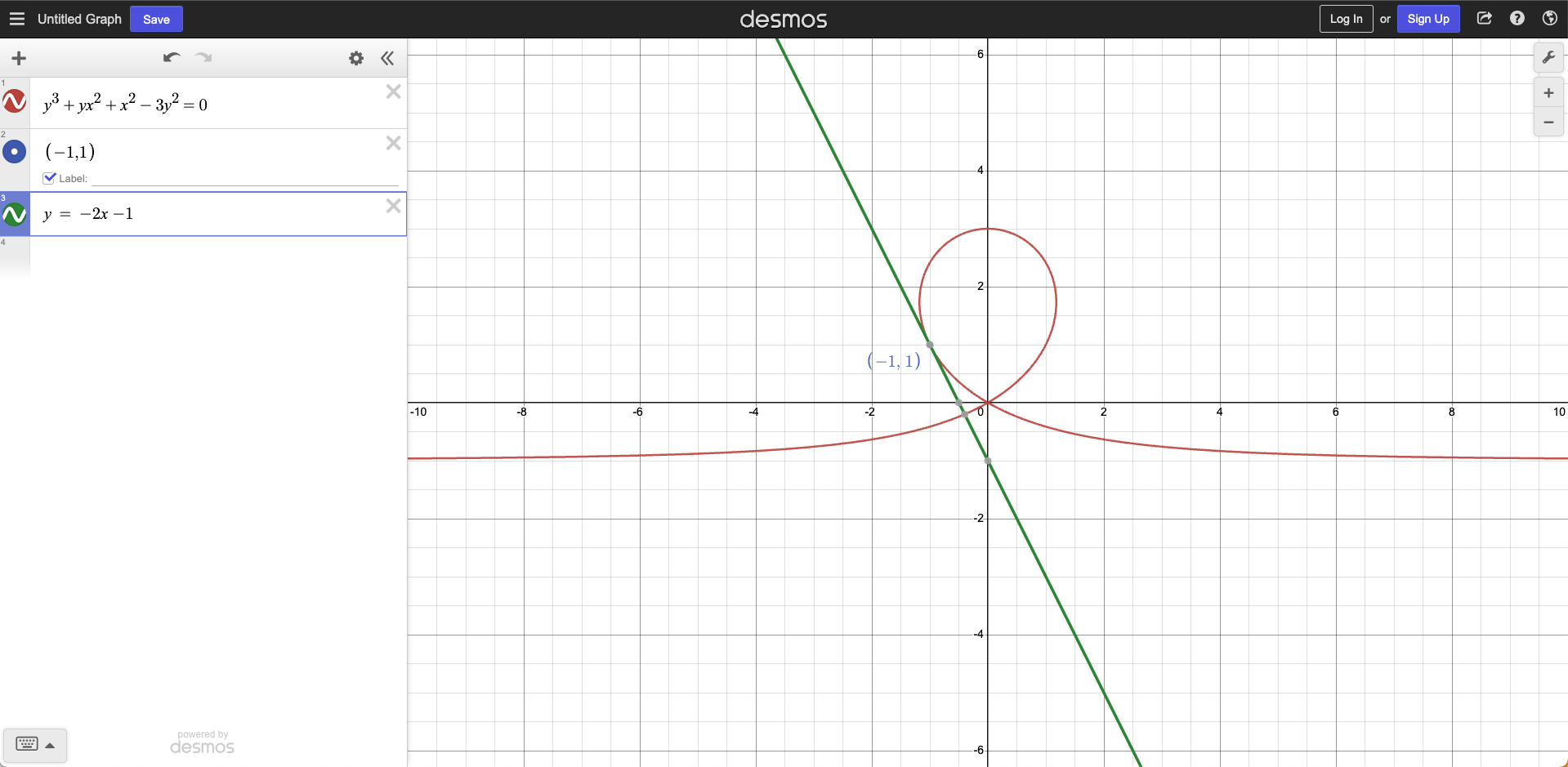WA4. Differentiation Exercises¶
Question 1¶
1. Chains Inc. is in the business of making and selling chains.
- Let c(t) be the number of miles of chain produced after t hours of production.
- Let p© be the profit as a function of the number of miles of chain produced
- Let q(t) be the profit as a function of the number of hours of production.
- Suppose the company can produce 3 miles of chain per hour and suppose their profit on the chains is $4000 per mile of chain.
1. Find and interpret (use complete sentences) each of the following (include units), c’(t) , p’© , and q’(t)?
- c’(t) = 3 miles per hour, that is, the company produces at a constant rate = 3 miles of chain per hour.
- p’© = 4000 dollars per mile, that is, the company makes 4000 dollars of profit per mile of chain produced.
- q’(t) = 12000 dollars per hour, that is, the company produces 3 miles per hour and makes 4000 of profit for each mile of chain produced, thus it makes 12000 dollars per hour.
2. How does q’(t) relates to p’© and c’(t) ?.
q’(t) = p’© * c’(t) = 4000 * 3 = 12000
The q(t) represents the profit per hour, which in turn is the product of the profit per mile and the number of miles produced per hour.
Question 2¶
2. Use Desmos to graph the function \(y^3+yx^2+x^2-3y^2=0\) and estimate the slope of the tangent line at (-1,1). Then find \(\frac{dy}{dx}\) using implicit differentiation and plug in x=-1 and y=1 . Compare and discuss the estimated slope with the slope you found analytically.
The graph of the function is shown below:

Well, I’m not sure how to estimate the slope of the tangent line at (-1,1) using Desmos, but it definitely must be negative as it looks from the graph above.
Now, let’s find \(\frac{dy}{dx}\) using implicit differentiation:
The slope at (-1,1) equals \(\frac{dy}{dx}\) when x=-1 and y=1:
And the slope of the tangent line at (-1,1) is -2, which is negative as expected.
The tangent equation is: \(y = -2x - 1\) and it is plotted with the graph of the function below:

Question 3¶
3. Let \(f(x)=(3x^2+1)^2\). Find \(f'(x)\) in 3 different ways by following the instructions below in parts a, b and c:
a) Develop the identity f(x) then take the derivative.
b) View f(x) as \((3x^2+1)(3x^2+1)\) and use the product rule to find \(f'(x)\).
The product rule states that if \(f(x) = g(x)h(x)\), then \(f'(x) = g'(x)h(x) + g(x)h'(x)\), so:
c) Apply the chain rule directly to the expression \(f(x)=(3x^2+1)^2\) .
The chain rule states that if \(f(x) = g(h(x))\), then \(f'(x) = g'(h(x))h'(x)\), so we can consider \(f(x) = g(h(x))\) where \(g(x) = x^2\) and \(h(x) = 3x^2 + 1\):
And let’s apply the chain rule:
d) Are your answers in parts a, b, c the same? Why or why not?.
All answers are the same as we are differentiating the same function just using different methods, so the result must be the same.
Question 4¶
4. Find \(\frac{dy}{dx}\) for the equation \(3y^2-cos(y)=x^3\).
Question 5¶
5. Find the equation of the tangent line that passes through point (1,2) to the graph \(8y^3+x^2y-x=65\).
Let’s compute \(\frac{dy}{dx}\) first:
Now, let’s find the slope of the tangent line at (1,2) by plugging in x=1 and y=2 into \(\frac{dy}{dx}\):
Now, let’s find the equation of the tangent line using the slope and the point (1,2):
we need another point to find c, let’s use, but I used c=2 and graphed the function and the tangent line below:

Question 6¶
6. Find \(\frac{dy}{dx}\) for the equation \(xy^2-x^2y=2\).
Question 7¶
7. Find \(f'(x)\) for the function \(f(x)= \sqrt[4]{-3x^4-2}\).
We will use the chain rule to find \(f'(x)\), considering \(f(x) = g(h(x))\) where
and now, let’s find \(f'(x)\):
Question 8¶
8. Find \(f'(x)\) for the function \(f(x)=(5x^2+3)^4\).
We will use the chain rule to find \(f'(x)\), considering \(f(x) = g(h(x))\) where
and now, let’s find \(f'(x)\):
Question 9¶
9. Find \(f'(x)\) for the function \(f(x)=sin^2(cos(4x))\).
We will use the chain rule to find \(f'(x)\), considering \(f(x) = g(h(x))\) where
and now, let’s find \(f'(x)\):
Question 10¶
10. Find \(f'(x)\) for the following functions:
a) \(f(x) = cos(ln4x^3))\)¶
We will use the chain rule to find \(f'(x)\), considering \(f(x) = g(h(x))\) where
and now, let’s find \(f'(x)\):
b) \(f(x)= e^{(4x^3+5)^2}\)¶
We will use the chain rule to find \(f'(x)\), considering \(f(x) = g(h(x))\) where
and now, let’s find \(f'(x)\):